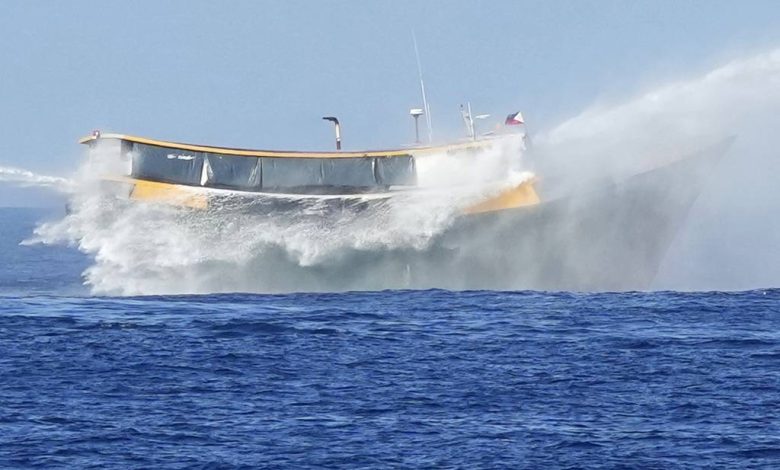China, Philippines set up hotline to prevent South China Sea clashes

MANILA, Philippines — A recently signed agreement will open a direct line of communication between the presidential offices of China and the Philippines to help prevent any new confrontation from spiraling out of control in the disputed South China Sea, according to highlights of the accord seen by The Associated Press on Tuesday.
China and the Philippines have created such emergency telephone hotlines at lower levels in the past to better manage disputes, particularly in two fiercely disputed shoals where the Philippines has accused Chinese forces of increasingly hostile actions and China says Philippine ships have encroached despite repeated warnings.
RELATED
The territorial disputes, however, have persisted since last year, sparking fears of a larger armed conflict that could involve the United States, which has repeatedly warned that it’s obligated to defend the Philippines, a key Asian treaty ally, if Filipino forces come under attack in the disputed waters.
U.S. Gen. CQ Brown, chairman of the Joint Chiefs of Staff, met Philippine military chief Gen. Romeo Brawner in Manila on Tuesday and discussed ways to further boost defense ties, enhance the militaries’ ability to operate jointly and ensure regional ability, the Philippine military said.
During a confrontation between Chinese and Philippine forces at the Philippines-occupied Second Thomas Shoal in August 2023, the Philippine government said it was unable to reach Chinese officials through an established “maritime communication mechanism” for several hours. That emergency telephone hotline was arranged after Philippine President Ferdinand Marcos Jr. met Chinese President Xi Jinping in Beijing in January 2023.
Chinese and Philippine officials dealing with the territorial disputes held talks in Manila on July 2, following a violent confrontation at the Second Thomas Shoal in which Chinese coast guard personnel reportedly wielded knives, an axe and improvised spears and Philippine navy personnel were injured. The Chinese forces also seized seven Philippine navy rifles, said Brawner, who demanded China return the firearms and pay for damages.
Both sides “recognized the need to strengthen the bilateral maritime communication mechanism on the South China Sea” and signed an arrangement “on improving Philippines-China maritime communication mechanisms,” the Department of Foreign Affairs in Manila said in a statement after the talks in Manila, but did not provide a copy or details of the agreement.
A copy of the agreement’s highlights, seen by the AP, said it “provides several channels for communication between the Philippines and China, specifically on maritime issues, through the representatives to be designated by their leaders.”
The hotline talks could also be done “through the Department of Foreign Affairs and Ministry of Foreign Affairs counterparts, including at the foreign minister and vice foreign minister levels or through their designated representatives,” it said, and added without elaborating that Philippine officials were “in discussions with the Chinese side on the guidelines that will govern the implementation of this arrangement.”
There was also a plan to set up a new communication channel between the Chinese and Philippine coast guards “once the corresponding memorandum of understanding” between them is concluded, according to the agreement.
During the talks in Manila, China and the Philippines agreed on two other confidence-boosting steps to intensify “cooperation between their respective coast guard authorities” and the possible convening of a maritime forum between Chinese and Philippine scientists and academic leaders.
“Both sides recognized that there is a need to restore trust, rebuild confidence and create conditions conducive to productive dialogue and interaction,” the Philippine department of foreign affairs statement said. It added that China and the Philippines “affirmed their commitment to de-escalate tensions without prejudice to their respective positions.”
It said that “there was substantial progress on developing measures to manage the situation at sea,” but acknowledged that “significant differences remain.”







